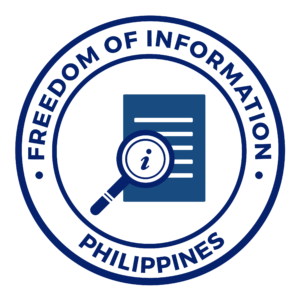This year’s Regional Travel Fair provided an opportunity for participants to network and showcase domestic tour packages to further increase nationwide domestic tourist arrival and receipts while promoting sustainable tourism in private-public initiatives and programs.
Anchoring on sustainability and focusing more on the promotion of domestic tourism in the country, this year’s Regional Travel Fair successfully concluded at SM Clark in Pampanga after four days of jam-packed activities including a pre-event tour, forum, business-to-business sessions, and a two-day business-to-consumer exhibit.
Spearheaded by the Tourism Promotions Board (TPB), the marketing arm of the Department of Tourism (DOT), the regional travel fair provided an opportunity for participants to take part in a social tourism program, network and sell domestic tour packages, products and services, and learn new marketing strategies and know-hows to improve businesses.
Now on its fourth run, the regional travel fair continues to open doors for domestic tourism as it aims to encourage more and more Filipinos to explore and discover the beauty of the Philippines.
LEARNING AND DOING BUSINESS: MORE FUN IN THE PHILIPPINES
The Regional Travel Fair featured local products and highlighted the work of artisans and weavers from places like Tacloban, Southern Cotabato, and Kalinga. Aside from the product showcase, a two-day business-to-consumer (B2C) expo was also conducted involving exhibitors composed of domestic and resort tour operators, hoteliers and airline companies marketing travel deals, special fares, exclusive discount packages and promos. Participating buyers and sellers were also given the opportunity to network and discuss business opportunities to generate leads and increase sales through travel exchange.
One of the highlights was the speaker forum organized for industry experts to share their insights on pivotal topics. Christine Mansinares of the Negros Occidental Provincial Tourism office spoke of empowering communities through social tourism entrepreneurship.
Domestic Department Officer-in-Charge, Nerissa Juan, talked about “Gender and Tourism” as well as travel trends and the fast growth of tourism especially in the Asia Pacific.
According to Juan, domestic tourism expenditures in the Philippines grew from PHP 2.1 billion in 2016 to PHP 2.6 billion in 2017, marking a 25.5 percent increase. Data also states that 42 million Filipinos travel to domestic destinations with 65 percent traveling mainly for pleasure.
Meanwhile, Jose Luis Yulo Jr., President of the Chamber of Commerce of the Philippine Islands, delved deeper into the fundamentals of MICE or Meetings, Incentives, Conventions and Events/Exhibits and its contribution to the Philippine tourism industry in his talk entitled, “MICE 101.”
CHAMPIONING SUSTAINABILITY
At the core of the four-day regional travel fair is sustainable tourism, a means of travel that brings positive impact to the environment, culture and the economy to benefit future generations. As a way to practice and impose sustainability on travel professionals, TPB arranged an immersion that allowed participants to farm and build houses through a partnership with Gawad Kalinga (GK) Community Development Foundation.
The concept of responsible and sustainable tourism was also emphasized all throughout the event to help increase interest from both domestic and foreign travelers in the country.
In her speech, TPB Chief Operating Officer (COO) Marie Venus Tan noted how past tourism marketing strategies were solely focused on the promotion of destinations to attract short and long haul visitors in the country. Now that the travel trends have changed due to globalization and advancement of technology, travel interests have also shifted with the need to find a more immersive and authentic travel experience.
COO Tan also pointed out that travel trends now lean more on sustainable and responsible tourism not only in the Philippines but across the globe as a way to limit the harm humans can do to the environment whenever they travel.
“TPB’s role is to translate sustainable and responsible tourism into travel, promotion, and marketing,” she said. “The new marketing direction is now solely focused on the Philippines: who we are, what we are, and how beautiful the country really is.”
For the Philippines to be able to outshine other Asian countries, TPB aims to build up on authentic Filipino culture and gastronomy, plus the nation’s strengths and assets that make it unique, such as the world-famous Filipino smile and hospitality. Moreover, COO Tan also put emphasis on Responsible, Ethical and Sustainable Tourism (REST) by covering experienced-based tourism approaches such as eco-tourism, adventure tourism, and cultural tourism.
In support of this advocacy, TPB launched the first Sustainable Community-Based Tourism Recognition (SCBTR), which aims to identify outstanding communities or destinations that practice sustainable tourism. COO Tan personally presented the criteria, objectives, timeline, and panel of assessors while stressing that all efforts should observe REST to be able to qualify.
ONWARD TO THE NEXT REGIONAL TRAVEL FAIR
A turnover ceremony led by Crisel Mae Yambao, a representative of DOT Region III and Elaine Unchuan, the regional director of DOT Region X, took place to formally launch the next Regional Travel Fair, which will be held in Cagayan de Oro this coming August.
TPB will again lead the pack with the hope of putting Mindanao, its products and its people at the forefront of domestic tourism and to provide a venue for industry players and stakeholders to do business with the aim of increasing the number of domestic travelers.
With sustainable tourism as the main focus of the country’s tourism campaign, TPB looks forward to strengthening its pillars for both local and international travelers to find more reasons to explore the country and experience for themselves why it’s indeed more fun in the Philippines.









